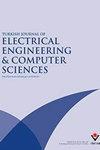用回归方法自动消除睡眠脑电图中的眼电信号伪影
IF 1.5
4区 计算机科学
Q4 COMPUTER SCIENCE, ARTIFICIAL INTELLIGENCE
Turkish Journal of Electrical Engineering and Computer Sciences
Pub Date : 2019-04-01
DOI:10.3906/ELK-1809-180
引用次数: 2
摘要
睡眠脑电图(EEG)信号是睡眠自动分期的重要临床工具。睡眠脑电图信号受到人工信号和其他生物信号源的影响,如眼电图(EOG)和肌电图(EMG),由于受到影响,其临床应用价值降低。因此,消除睡眠脑电图信号中的眼电信号伪影是实现自动睡眠分期的主要挑战。我们研究了脑电信号对睡眠脑电的影响,并尝试用回归方法将其从脑电信号中去除。7名受试者的EEG和EOG记录来自埃尔巴坎大学Meram医学院睡眠研究实验室。研究使用了58 h 6941 epoch的数据集。然后,为了观察这一过程的结果,我们使用人工神经网络(ANN)对纯睡眠脑电信号和消除伪影的脑电信号进行分类。结果表明,消除EOG伪影后,对每个主题的分类准确率提高了1% - 1.5%。然而,这种增加是在单一参数下获得的。如果考虑到整个系统,这可以被视为一个重要的改进。然而,对于另一种睡眠脑电信号伪影,不同的伪影消除策略结合不同的分类方法可能会使原始信号与纯化信号的准确率差异更高。本文章由计算机程序翻译,如有差异,请以英文原文为准。
Automated elimination of EOG artifacts in sleep EEG using regression method
Sleep electroencephalogram (EEG) signal is an important clinical tool for automatic sleep staging process. Sleep EEG signal is effected by artifacts and other biological signal sources, such as electrooculogram (EOG) and electromyogram (EMG), and since it is effected, its clinical utility reduces. Therefore, eliminating EOG artifacts from sleep EEG signal is a major challenge for automatic sleep staging. We have studied the effects of EOG signals on sleep EEG and tried to remove them from the EEG signals by using regression method. The EEG and EOG recordings of seven subjects were obtained from the Sleep Research Laboratory of Meram Medicine Faculty of Necmettin Erbakan University. A dataset consisting of 58 h and 6941 epochs was used in the research. Then, in order to see the consequences of this process, we classified pure sleep EEG and artifact-eliminated EEG signals with artificial neural networks (ANN). The results showed that elimination of EOG artifacts raised the classification accuracy on each subject at a range of 1%– 1.5%. However, this increase was obtained for a single parameter. This can be regarded as an important improvement if the whole system is considered. However, different artifact elimination strategies combined with different classification methods for another sleep EEG artifact may give higher accuracy differences between original and purified signals.
求助全文
通过发布文献求助,成功后即可免费获取论文全文。
去求助
来源期刊

Turkish Journal of Electrical Engineering and Computer Sciences
COMPUTER SCIENCE, ARTIFICIAL INTELLIGENCE-ENGINEERING, ELECTRICAL & ELECTRONIC
CiteScore
2.90
自引率
9.10%
发文量
95
审稿时长
6.9 months
期刊介绍:
The Turkish Journal of Electrical Engineering & Computer Sciences is published electronically 6 times a year by the Scientific and Technological Research Council of Turkey (TÜBİTAK)
Accepts English-language manuscripts in the areas of power and energy, environmental sustainability and energy efficiency, electronics, industry applications, control systems, information and systems, applied electromagnetics, communications, signal and image processing, tomographic image reconstruction, face recognition, biometrics, speech processing, video processing and analysis, object recognition, classification, feature extraction, parallel and distributed computing, cognitive systems, interaction, robotics, digital libraries and content, personalized healthcare, ICT for mobility, sensors, and artificial intelligence.
Contribution is open to researchers of all nationalities.
 求助内容:
求助内容: 应助结果提醒方式:
应助结果提醒方式:


